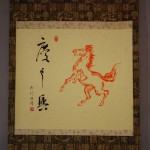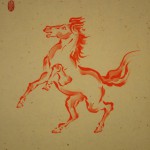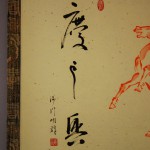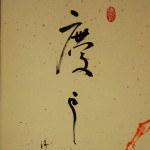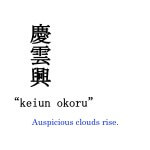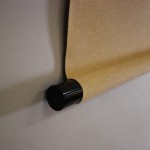Products Lineup
News / Blog
Other Menus
Kakejiku Hanging Scroll: Red Horse / Myoujun Shiozawa - Keiba
- Product ID
- 0170
- Name
- Myoujun Shiozawa
- Profile
1931-
The former chief priest of the Jinpuku-ji Temple- Size
- 606mm x 1460mm
- Roller End Material
Wood coated with black "urushi" (lacquer)- Material of the Work
- Japanese paper
- Price
- JPY 70,000
- Stock Condition
- In stock
- Payment: Click the Paypal Mark
- Duty and Taxes
Import duty and taxes are beyond our control and may apply to your shipment. Please noted that these fees are the responsibility of the buyer.
- Description
Koubou-Daishi Kūkai, a great Buddhist priest, painted a red horse on an “ema” (votive wooden tablet) and told fortunes with it. Therefore, red horses were considered lucky.
This work is a combination of a red horse painting and calligraphy by Myoujun Shiozawa. Myoujun Shiozawa is the former chief priest of the Jinpuku-ji Temple, which belongs to the Toufuku-ji Temple school of the Rinzai sect. Myoujun Shiozawa rarely creates a work for the purposes of selling it, so this work is very rare. In this work, the lively lines of the calligraphy and the depiction of the vigorous red horse are wonderful. It looks as if this work gives us a positive energy.




